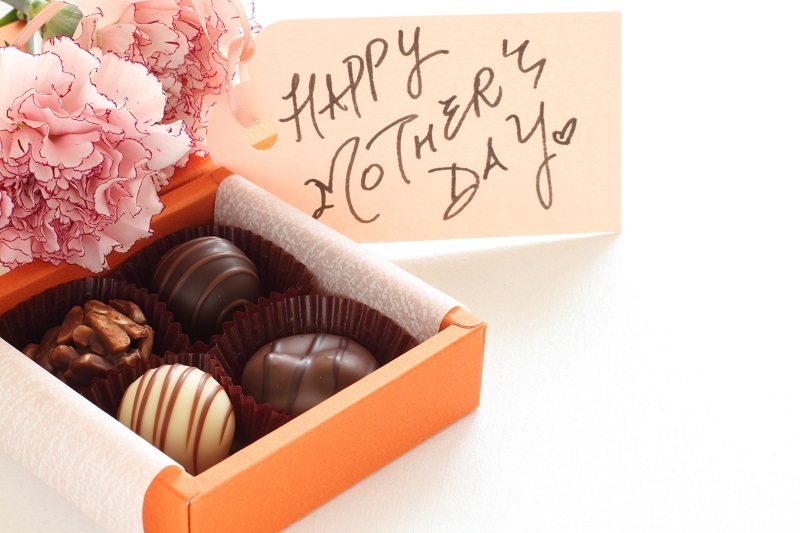Preserve the Splendor of Your Poinsettias with These Tips
Posted on 16/08/2025
Preserve the Splendor of Your Poinsettias with These Tips
Poinsettias are synonymous with festive cheer, adding vibrant red, pink, white, or even marbled hues to our homes each holiday season. But how can you preserve poinsettia beauty well beyond December? With the right tips and some special attention, your poinsettia plants can thrive and bring brightness to your space for months--or even years--to come. This comprehensive guide reveals everything you need to know about caring for poinsettias, from selecting the healthiest plants to ensuring ongoing lushness and color.

Why Preserve Your Poinsettia's Beauty?
Poinsettias, or Euphorbia pulcherrima, are more than a fleeting holiday decoration. Their vibrancy and lush foliage are perfect for brightening up interiors during the winter months. With proper care, you can maintain poinsettia splendor and even encourage these striking plants to bloom again next season. Learning how to care for poinsettias effectively brings many benefits:
- Extended enjoyment: Enjoy colorful bracts and healthy foliage well after the holidays.
- Eco-friendliness: Reusing your plant year after year is more sustainable.
- Cost savings: Avoid buying new plants each year by nurturing your existing ones.
- Pride: Experience satisfaction watching your plant thrive under your care.
Choosing a Healthy Poinsettia
Preserving poinsettia magnificence starts with selecting the right plant at the very beginning. Follow these guidelines to choose a robust specimen:
- Look for lush, vibrant bracts: The colorful parts should be vivid and unblemished. Pale, drooping, or spotted bracts signal an unhealthy plant.
- Check the true flowers: Poinsettia flowers are the small yellow clusters at the bract's center. They should be tight and not shedding pollen, indicating freshness.
- Inspect the leaves: Deep green, healthy leaves from stem to soil mean the plant is well-nourished. Avoid plants with wilted, yellow, or dropped leaves.
- Examine the stems: The stems should be strong and not broken or bruised.
- Avoid cold exposure: Never purchase a poinsettia left in a drafty or chilly spot--cold damage may not show until later.
Transporting Your Poinsettia Home
Poinsettias are delicately sensitive to cold and draughts. Always have your plant wrapped in paper by the nursery staff, and transport it promptly to prevent shock or wilt. Even a few minutes exposed to low temperatures can cause irreversible damage, so provide insulation if it's cold outside.
Optimal Placement in Your Home
Poinsettia plant care starts with picking the perfect spot at home:
- Bright, indirect sunlight: Place your poinsettia near a sunny window, but avoid direct sunlight, which can scorch leaves and bracts.
- Steady, warm temperature: Maintain a temperature between 65-75?F (18-24?C) during the day. At night, don't let it dip below 60?F (15?C).
- No drafts: Keep away from doors, heater vents, cold windows, and ceiling fans. Sudden temperature changes cause stress and leaf drop.
- Humidity: Poinsettias appreciate a bit of humidity. Use a room humidifier or place a dish with water and pebbles near the plant to add moisture to the air.
Pro Tip: Rotate your plant every few days for even light exposure and growth!
The Right Way to Water Your Poinsettias
One of the leading causes of poinsettia decline is overwatering or underwatering. Follow these watering tips for lush, lasting foliage:
- Check the soil: Water when the soil surface feels dry to the touch--not soggy or parched.
- Thorough watering: Water until it drains from the bottom, then discard excess water from saucers or foil wraps. Never let the roots sit in standing water.
- Humidity is key: In dry environments, mist leaves lightly or use a pebble tray.
- Don't use cold water: Room temperature or lukewarm water is ideal, helping to avoid root shock.
Fertilizing to Preserve Poinsettia Splendor
During the holidays, your poinsettia doesn't require extra fertilizer. Fertilize only after the blooming season ends--usually starting in late winter or early spring. Here's what you need to know:
- Use a balanced, water-soluble fertilizer (such as 20-20-20 or 10-10-10).
- Feed monthly, following the manufacturer's instructions.
- Over-fertilizing can burn the roots and damage the plant, so use a diluted solution.
By fertilizing appropriately, your poinsettia will have the nutrients it needs for lush, green leaves and future blooms.
Dealing with Pests and Common Problems
Healthy poinsettias are naturally pest resistant, but sometimes issues arise. To maintain your poinsettia's splendor, watch for:
- Whiteflies: Small, white insects that flutter around when the plant is disturbed. Remove by spraying with soapy water or using yellow sticky traps.
- Mealybugs: These appear as cottony clumps on leaves and stems. Treat with insecticidal soap.
- Spider mites: Fine webs and speckled leaves are signs. Increase humidity and use insecticidal soap if necessary.
- Root rot: Results from overwatering. Always let the soil dry slightly before watering again.
- Leaf drop: Caused by cold drafts, sudden temperature changes, or excessive dryness.
Pruning and Shaping Your Poinsettia
Proper pruning is key to maintaining the vibrance of poinsettia plants, especially if you wish to keep yours for another year and encourage reblooming. Here's how to prune your poinsettia:
- After blooming, in late winter: When bracts fade, cut stems back to 4-6 inches tall. This encourages new, bushy growth.
- Remove faded leaves and stems: Always use clean, sharp scissors or pruners.
- Continue pruning lightly: Pinch back new shoots during spring and summer to shape your plant and encourage fuller foliage.
Wear gloves: Poinsettias produce a milky sap that can be irritating to some people's skin.
Poinsettia Aftercare: From Spring to Fall
If you want your holiday beauty to return next year, follow these steps throughout the seasons:
Spring and Early Summer
- Continue monthly fertilizing.
- Place your plant outdoors if temperatures consistently remain above 60?F (15?C); provide filtered sunlight, never direct midday sun.
- Repot your poinsettia if it has outgrown its pot, using fresh and well-draining soil.
Summer
- Water regularly and keep an eye out for insect infestations.
- Pinch back growth in late July or early August, leaving 2-3 leaves on each stem.
Early Fall
- Bring your poinsettia indoors when nighttime temperatures drop below 55?F (12?C).
- Resume indoor care: bright, indirect light, and regular watering.
How to Rebloom Poinsettias for the Holidays
For the ultimate reward, aim to encourage your poinsettia to rebloom with vibrant bracts in time for the next festive season. Achieving this requires a special regimen starting in late September or early October:
- Follow the 12-14 hour darkness rule: Poinsettias need at least 12-14 hours of complete darkness every day for 8-10 weeks. Place them in a closet or cover them with a box or black bag each night from 5pm to 8am, then return them to bright indirect sunlight during the day.
- Consistent care: Continue watering and monthly fertilizing as before.
- Expect colored bracts: If you follow this regimen, by mid-December, your poinsettia should be bursting with new color just in time for the holidays!
Tip: Consistency is key! Even a stray beam of light during the darkness period can interrupt the blooming process.
Safety Considerations for Poinsettias
- Are poinsettias poisonous? Poinsettias are not as toxic as once believed. They may cause mild stomach upset if ingested, but they are not deadly. Keep them away from curious pets and children as a precaution.
- Skin irritation: The milky sap can occasionally irritate skin. Wash hands after handling and keep away from eyes.
Fun Facts About Poinsettias
- The poinsettia is native to Mexico, where it is known as "Nochebuena".
- December 12th is National Poinsettia Day in the United States, honoring the plant and its ambassador Joel Poinsett.
- The colorful "flowers" are actually bracts; the true flowers are the small yellow centers.
- There are more than 100 cultivated varieties, from classic red to marble, pink, white, and even "glittered" types.

Frequently Asked Questions About Poinsettia Care
How long can I keep a poinsettia alive?
With proper care, poinsettia plant vibrance can last several months and many indoor gardeners have kept their plants thriving year after year.
Why is my poinsettia dropping leaves?
Leaf drop often signals stress from drafts, low humidity, or cold exposure. Review the environmental conditions and adjust accordingly.
How do I know if I'm watering correctly?
The best sign is soil that is consistently moist but not soggy and leaves that appear healthy and firm, not limp or turning yellow.
Can I propagate my poinsettia?
Yes! Take 3-4 inch stem cuttings in spring, dip in rooting hormone, and plant in well-draining soil. Keep warm and humid until rooted.
Conclusion: Revel in Your Poinsettia's Lasting Splendor
With a little dedication and the right know-how, you'll preserve the beauty of your poinsettias and enjoy their cheerful hues well past the holiday season. From optimal light and temperature to attentive watering, careful fertilizing, and timely pruning, these tips will help you foster healthy, robust plants. Try your hand at reblooming and transform your poinsettia from a short-lived decoration to a treasured, perennial part of your festive traditions.
Remember: A thriving poinsettia is not just a symbol of the holidays--it's a testament to your indoor gardening skill and care. Happy growing!
Latest Posts
Gardeners' Guide to Maintaining Lovely Poinsettias
8 Secrets About Sunflowers That Will Fascinate You
Send Love: Birthday Flowers That Speak Volumes







